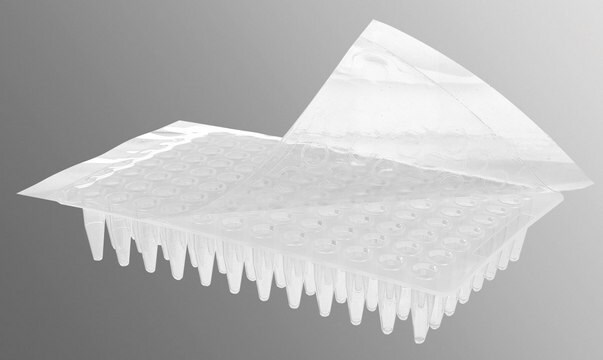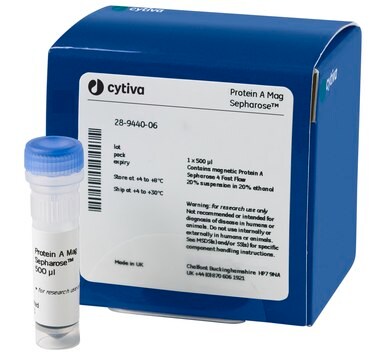Recommended Products
manufacturer/tradename
Cytiva RPN4000
General description
Amersham QuickStain enables protein detection directly after SDS-PAGE or transfer. Supports Western blot normalization for quantitative Western blotting.
Choose between two quick labeling protocols
Amersham QuickStain is based on Cy5 NHS ester labeling of reactive amino groups in proteins. First, dilute protein samples 10-fold in the optimized labeling buffer. Then, add a fixed amount of Cy5. Incubate for 5 min at 95°C for qualitative analysis or 30 min at room temperature for quantitative applications.
- Quick SDS-PAGE analysis: Prelabel protein samples with ready-to-use Cy5 dye for quick, sensitive detection without gel staining and destaining
- Easy Western blot normalization: Use standard 30 min protocol for quantitative Western blotting results; avoids the need for loading controls
- Wide sample range: Effectively label complex samples or pure proteins from 1 μg/mL to 20 mg/mL, so no need to pre-measure protein concentrations
- Good sensitivity: As sensitive as silver staining with wider dynamic range
- Broad dynamic range: Simultaneously detect main band and impurity levels as low as 0.1% intensity of main band, using a fluorescence scanner or imager
- Versatility: Load samples onto self-poured gels or a variety of commercial gels; possible because most materials have low Cy5 fluorescence
Choose between two quick labeling protocols
Amersham QuickStain is based on Cy5 NHS ester labeling of reactive amino groups in proteins. First, dilute protein samples 10-fold in the optimized labeling buffer. Then, add a fixed amount of Cy5. Incubate for 5 min at 95°C for qualitative analysis or 30 min at room temperature for quantitative applications.
Features and Benefits
- Quick SDS-PAGE analysis: Prelabel protein samples with ready-to-use Cy5 dye for quick, sensitive detection without gel staining and destaining
- Easy Western blot normalization: Use standard 30 min protocol for quantitative Western blotting results; avoids the need for loading controls
- Wide sample range: Effectively label complex samples or pure proteins from 1 µg/mL to 20 mg/mL, so no need to pre-measure protein concentrations
- Good sensitivity: As sensitive as silver staining with wider dynamic range
- Broad dynamic range: Simultaneously detect main band and impurity levels as low as 0.1% intensity of main band, using a fluorescence scanner or imager
- Versatility: Load samples onto self-poured gels or a variety of commercial gels; possible because most materials have low Cy5 fluorescence
Legal Information
Amersham is a trademark of Cytiva
Storage Class
10 - Combustible liquids
flash_point_f
Not applicable
flash_point_c
Not applicable
Certificates of Analysis (COA)
Search for Certificates of Analysis (COA) by entering the products Lot/Batch Number. Lot and Batch Numbers can be found on a product’s label following the words ‘Lot’ or ‘Batch’.
Already Own This Product?
Find documentation for the products that you have recently purchased in the Document Library.
Our team of scientists has experience in all areas of research including Life Science, Material Science, Chemical Synthesis, Chromatography, Analytical and many others.
Contact Technical Service





